Winterizing your Koi pond is a crucial task for keeping your fish healthy during the colder months. The process entitles preparing your fish and the pond they live in for the winter season. You have to ensure they have the necessary protection to survive the cold season.
But what exactly does this mean for someone who never had to think about winterizing koi pond before?
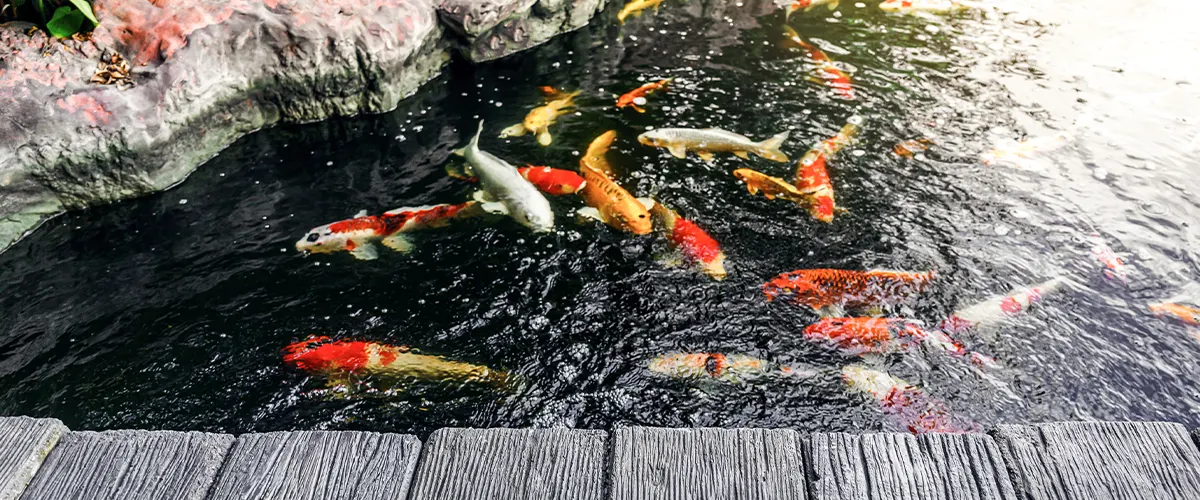
Why Cold Weather Is Detrimental To Your Koi's Health
The Fish Health Factor
Winter can really take a toll on your Koi fish, as the colder temperatures will decrease their metabolism. This exposes the pond fish to diseases and various other health problems.
As the pond freezes, your fish will have less access to oxygen. Pond owners should be aware of these issues and winterize their Koi pond to provide stable water temperatures, a healthy oxygen intake, and meet all the Koi’s requirements for a healthy habitat.
The Water Freezing Factor
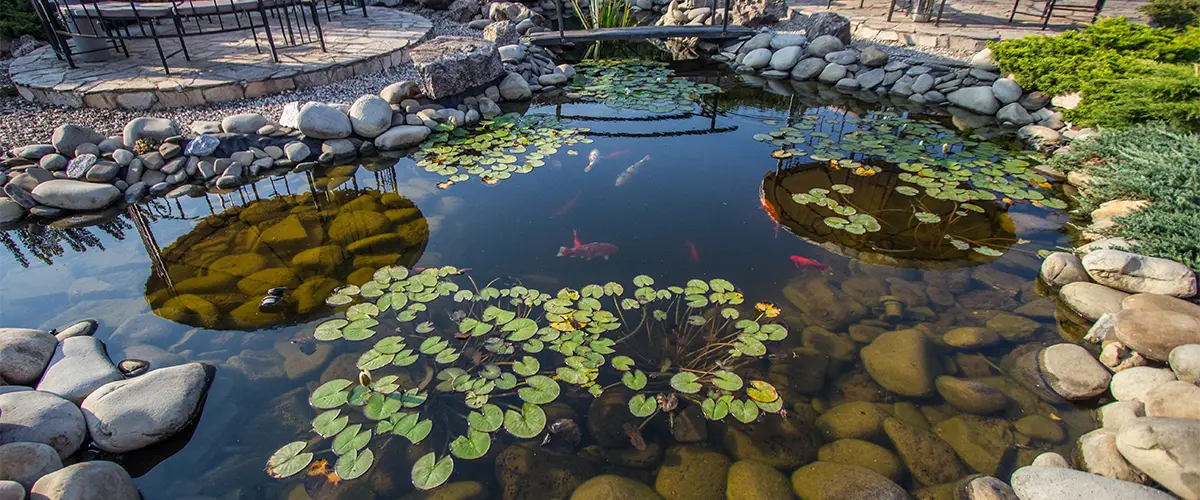
The Water Quality Factor
As winter approaches, the cold temperatures can cause a buildup of debris and fish waste in your Koi pond. This buildup decreases water quality, forcing your fish to live in an unhealthy environment.
A great part of the winterizing process involves cleaning your pond thoroughly, removing debris, and maintaining water quality. All these measures put together will ensure that your fish stay healthy and happy during the winter months.
The Pond Equipment Factor
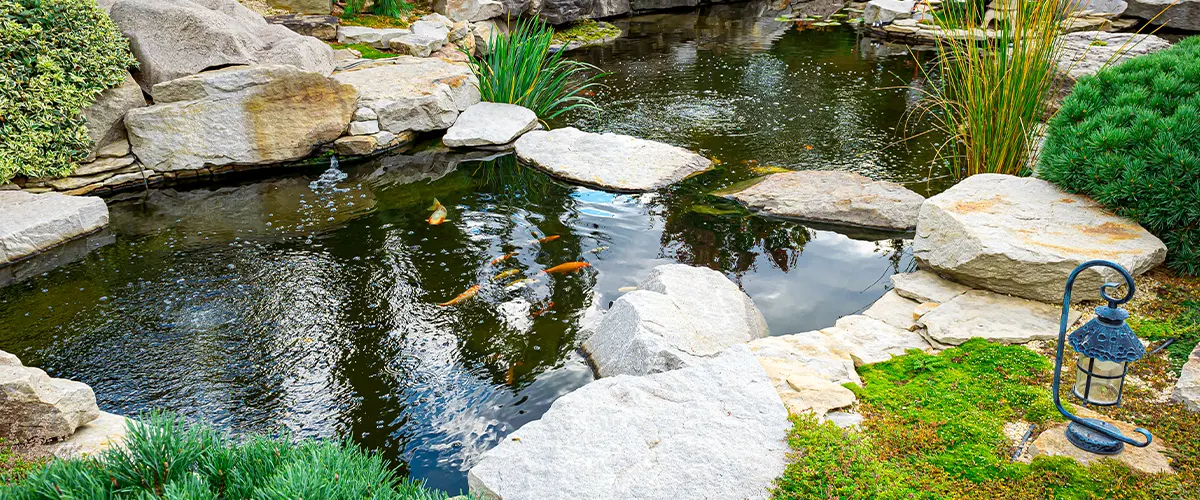
How To Winterize Your Pond
Step 1: Cleaning the Pond
Before you kickstart this entire winterizing process, it’s essential to clean the pond thoroughly. Get rid of any debris, fallen leaves, or dead plants that might have fallen into the pond to prevent them from decomposing and polluting the water.
You also must eliminate any sludge accumulated on the bottom and sides of the pond. Don’t skip the cleaning part of the process because you have to provide a healthy environment for your fish to thrive in spite of such cold temperatures.
Step 2: Trimming and Removing Plants
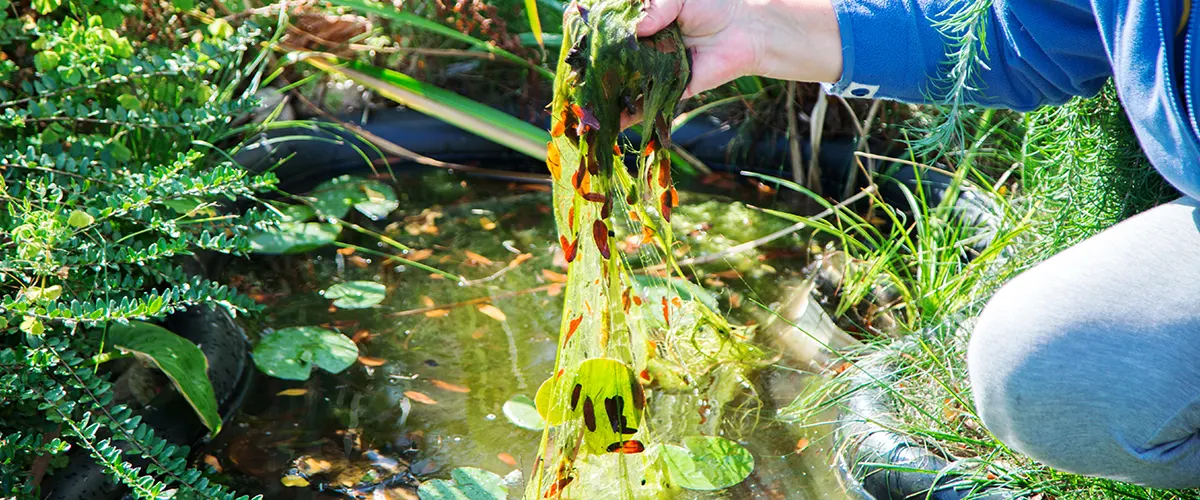
Step 3: Installing a Pond Heater
Step 4: Maintaining Water Quality
Water quality is often neglected when winterizing Koi fish ponds. As part of this process, you must keep the water pH levels balanced while ensuring enough oxygen in the water. With the help of a biological filter, you can remove any toxins or waste from the water.
Test the water frequently to ensure the parameters stay within the required limits. Some homeowners like to add cold water beneficial bacteria in their backyard ponds to ensure a healthier ecosystem for their fish to thrive.
Step 5: Feeding Your Fish The Right Way
Pond rakes are a crucial pond cleaning tool. Their primary role is to remove debris from the bottom of the pond, but they are versatile enough to be used to remove weeds and other unwanted plants.
These pond maintenance tools typically come with a long handle and a rake head with tines. If you’re having trouble with unwanted pond debris and twigs landing in your backyard pond, a pond rake is a lifesaver.
Fish food is an important part of winterizing. As your Koi’s metabolism slows down, they don’t need the same amount of food as they do during warmer months.
Overfeeding your fish can lead to health problems, causing extra waste and decreasing water quality. Feed them high-quality, low-protein cold water fish food. Reduce feeding frequency to once per day.

Step 6: Covering Your Pond
Hire An Expert To Help You Save Time And Avoid Stress
Winterizing a Koi pond can be a time-consuming and tedious task. However, you can bypasss the stress and anxiety of having skipped a step or not having the knowledge needed to truly protect your fish.
Winter pond care can be anxiety-inducing, but our pond cleaning services can help with all that.
Professional Expertise: Our professional pond team has the knowledge and expertise to help you winterize your Koi pond the right way. We will assess the unique needs of your pond and offer customized solutions to ensure that your fish don’t merely survive the winter, but also thrive and stay healthy.
Thorough Cleaning: Winterizing a pond involves thorough cleaning to eliminate any debris and waste, prevent ice dams, and do everything needed to prevent cooler temperatures from taking their toll. Panhandle Ponds offers a complete pond cleaning service, which includes getting rid of anything that shouldn’t be in your pond water.
Preventing Algae Growth: Algae growth is a common problem in Koi ponds, especially when they don’t get enough sunlight. We offer treatments to prevent algae growth and ensure that your pond water is perfect for your Koi fish.
Equipment Maintenance: Enjoy a thorough service that includes maintenance and repair of your equipment. Whether it’s filter media or a pond pump, we’ll make sure your investment in pond equipment is protected.
Peace of Mind: In the end, all you really want is to be able to enjoy a beautiful pond with healthy fish after winter has passed. Taking care of a living being is usually not an easy task, but you don’t have to worry about your fish when you have trained professionals on the job. Spend your time doing something that brings you joy without worrying that, when the cold weather hits, your fish are in danger.
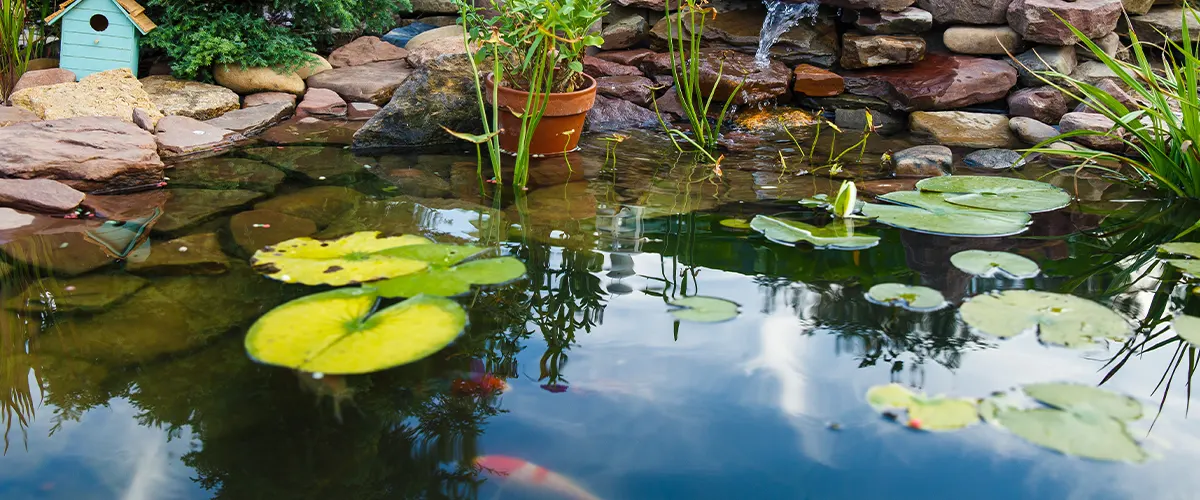
Conclusion
Skipping a single step in the pond winterizing process can put your fish at peril. From a broken air pump to pond freezing, there are many variables to consider if you want to protect your backyard pond.
Panhandle Ponds understands the pain like no other, and we’re committed to taking this load off your shoulders. We’re just two minutes away from learning your concerns and providing peace of mind knowing that you have knowledgeable people taking care of your pond fish.
